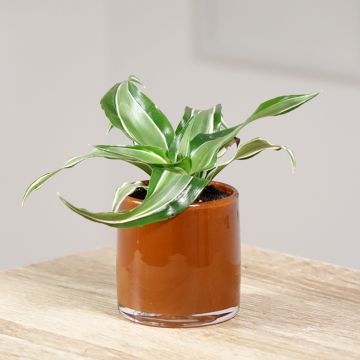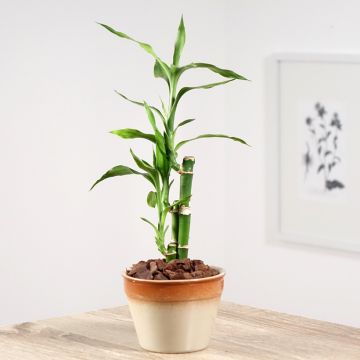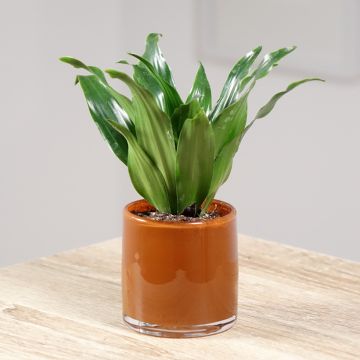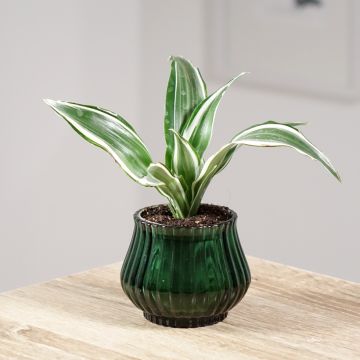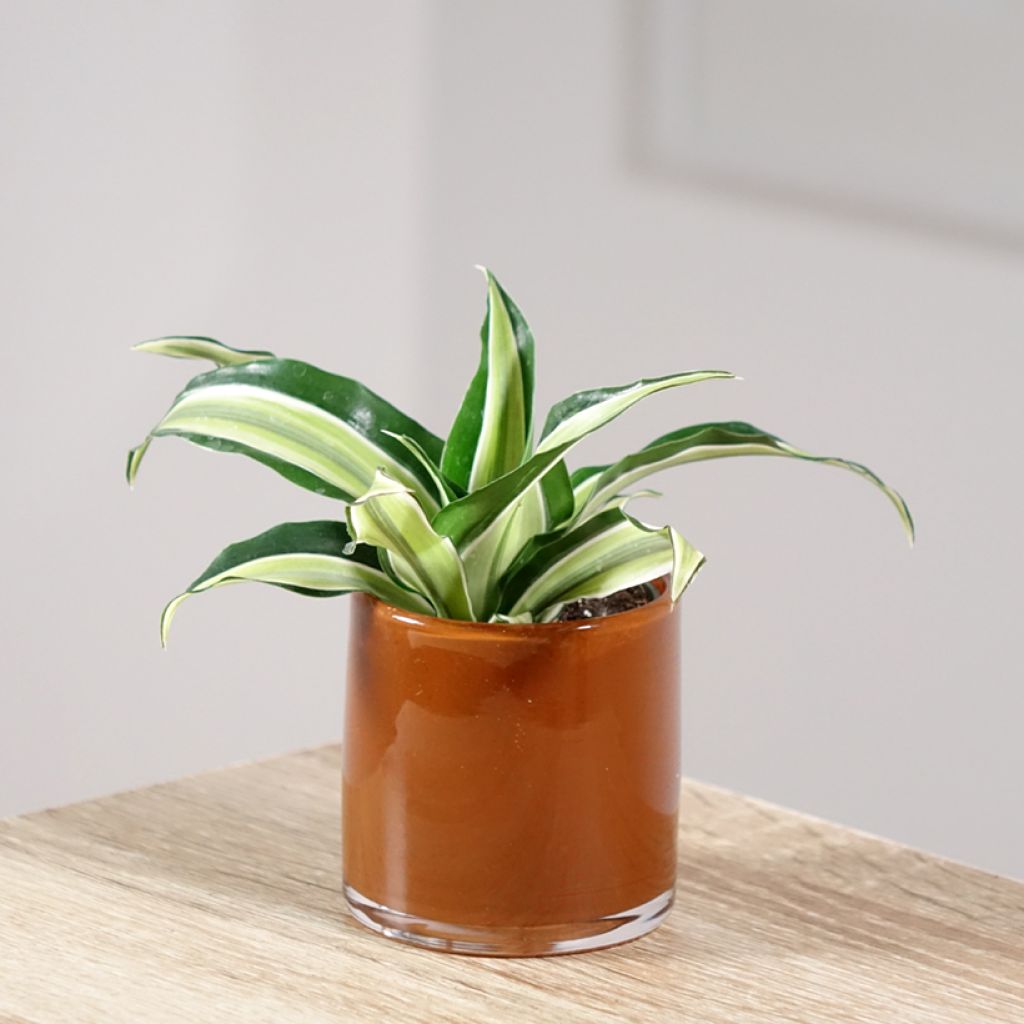

Dracaena fragrans Malaika - Corn plant
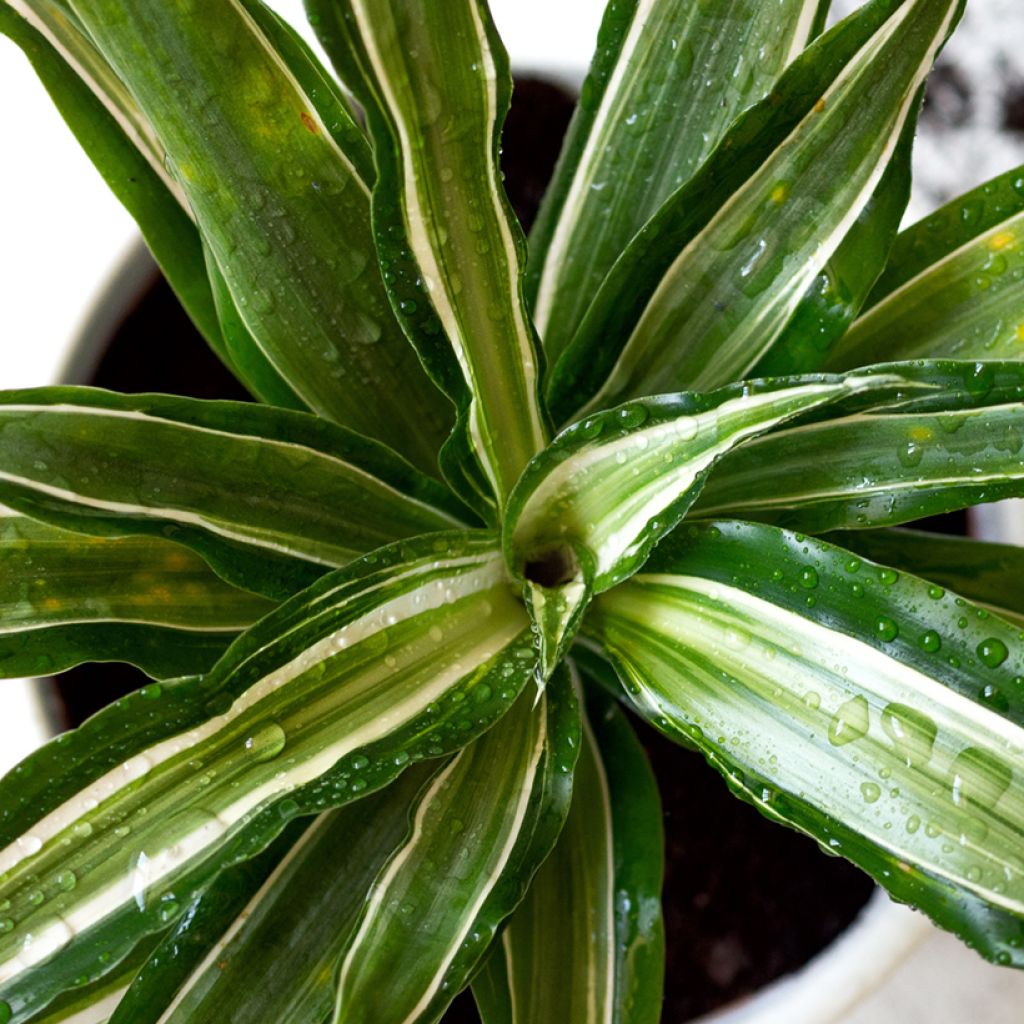

Dracaena fragrans Malaika - Corn plant
Dracaena fragrans Malaika - Corn plant
Dracaena fragrans Malaika
Corn plant
This item cannot be shipped to the selected country
Delivery charge from 6,90 €
More information
Shipping country:
-
-
-
-
-
-
-
-
-
-
-
-
-
-
-
-
-
-
-
-
-
-
-
-
-
-
-
-
-
-
-
-
Schedule delivery date,
and select date in basket
This plant carries a 30 days recovery warranty
More information
We guarantee the quality of our plants for a full growing cycle, and will replace at our expense any plant that fails to recover under normal climatic and planting conditions.
From 7,90 € for pickup delivery and 6,90 € for home delivery
Express home delivery from 8,90 €.
Description
The Dracaena fragrans 'Malaika' (synonym Dracaena deremensis 'Malaika') is an irresistibly charming indoor Dragon Tree with its exotic allure and beautiful variegated foliage. Its growth consists of long, narrow sword-shaped leaves, where the light green and white central section contrasts beautifully with the dark green edges. This compact indoor plant, with moderate growth, forms a clump that gradually rises to form a short trunk. Highly graphic, this Dragon Tree also captivates with its ease of cultivation in most indoor conditions.
Now classified within the Asparagaceae family, the Dracaena genus comprises several dozen species primarily native to Africa and Southeast Asia, but also found in regions such as China, Central America, and Australia. The Dracaena fragrans species sometimes called Cordyline fragrans grows naturally in tropical Africa from sea level up to 1,500 metres in altitude. It thrives in dense stands, in dry lowland forests, or in mid-altitude montainous areas. The fragrant Dragon Tree forms a medium-sized bush, reaching a height of up to 6 m, with semi-woody, typically unbranched stems of 2.5 to 10 cm in diameter. The long sword-shaped leaves can grow up to 1 m in length, and the inflorescences up to 60 cm. The small flowers, which are white-yellow and 2 cm in diameter, emit a strong fragrance at night when they open. Once pollinated, they develop into small orange or red fruits 1.5 to 12 cm in diameter.
The Dracaena 'Malaika' is a horticultural cultivar whose name means 'angel' in Swahili, a language spoken by around 100 million people in East Africa. Not only does its leaf colour clearly distinguish it from the species type, but it is also much smaller, making it suitable for indoor cultivation. At maturity, it typically forms a small tower of 1 m to 1.20 m in height and 50 to 60 cm in width, though older specimens may grow slightly taller. Typically, the leaves grow in a spiralled arrangement, giving the foliage a star-like appearance when viewed from above. The slightly sheathing leaf bases overlap, initially growing upright before gracefully arching, giving plants a false palm-like appearance. The sword-shaped lamina are very elongated and relatively narrow, measuring 30 to 50 cm in length. The central section is a beautiful light to chartreuse green bordered by two fairly broad and regular white lines, themselves framed by a dark green margin for a striking effect. This colour harmony gives the variety its distinctive character and brings light into a room. While it thrives in bright light (avoiding direct sunlight), this adaptable plant also tolerates lower light conditions, though it will grow more slowly. As layers of leaves accumulate, this small Dragon Tree eventually forms a short trunk, topped by a clump of leaves. Not only highly ornamental, this attractive plant is also reputed to purify the surrounding air—another reason to welcome it into your home, even if it won’t flower indoors.
The charming Malaika Dragon Tree will add a tropical touch to your living space, fitting equally well in a contemporary setting or a lush green décor. Highly versatile, it will adapt to variable degrees of light and doesn’t require high humidity. Plant it in a dark, glossy pot to highlight its colours and pair it with other plants of a similar style. A Chinese Evergreen with variegated foliage would make a perfect companion to create a vibrant display in your room, or a striking Anthurium magnificum x Dark Phoenix, with its velvety leaves veined in silvery white, so evocative of the tropics.
Report an error about the product description
Dracaena fragrans Malaika - Corn plant in pictures
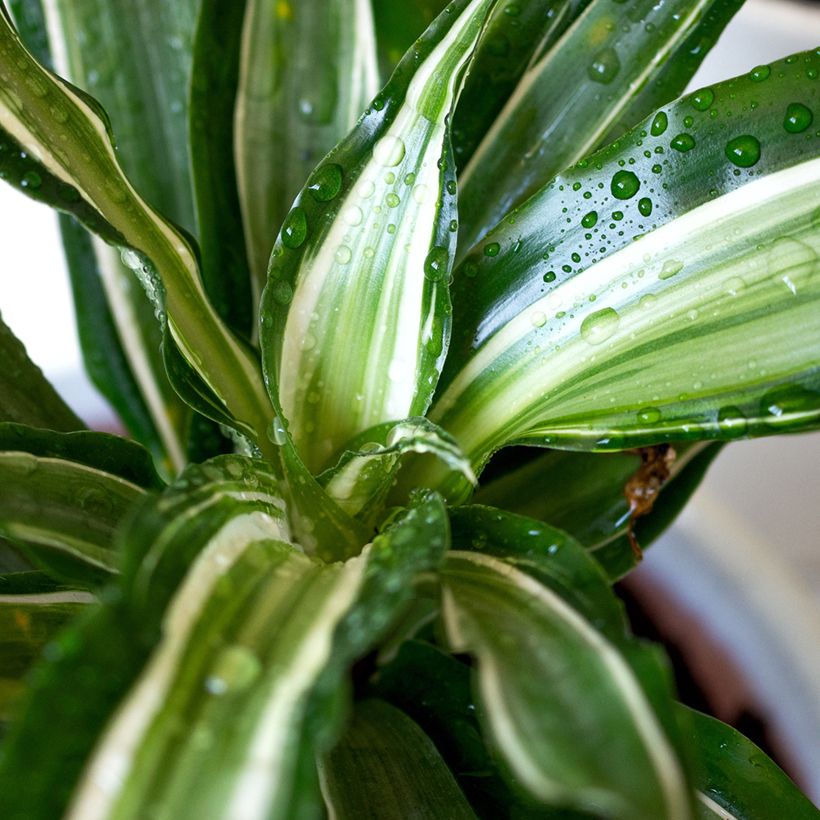

Foliage
Plant habit
Botanical data
Dracaena
fragrans
Malaika
Asparagaceae
Corn plant
Cultivar or hybrid
Other Dracaena - Dragon Tree
View all →Location
Location
Maintenance and care
Potting advice, substrates and fertilisers
Houseplant care
Disease and pest advice
Maintenance and care
This item has not been reviewed yet - be the first to leave a review about it.
Haven't found what you were looking for?
Hardiness is the lowest winter temperature a plant can endure without suffering serious damage or even dying. However, hardiness is affected by location (a sheltered area, such as a patio), protection (winter cover) and soil type (hardiness is improved by well-drained soil).

Photo Sharing Terms & Conditions
In order to encourage gardeners to interact and share their experiences, Promesse de fleurs offers various media enabling content to be uploaded onto its Site - in particular via the ‘Photo sharing’ module.
The User agrees to refrain from:
- Posting any content that is illegal, prejudicial, insulting, racist, inciteful to hatred, revisionist, contrary to public decency, that infringes on privacy or on the privacy rights of third parties, in particular the publicity rights of persons and goods, intellectual property rights, or the right to privacy.
- Submitting content on behalf of a third party;
- Impersonate the identity of a third party and/or publish any personal information about a third party;
In general, the User undertakes to refrain from any unethical behaviour.
All Content (in particular text, comments, files, images, photos, videos, creative works, etc.), which may be subject to property or intellectual property rights, image or other private rights, shall remain the property of the User, subject to the limited rights granted by the terms of the licence granted by Promesse de fleurs as stated below. Users are at liberty to publish or not to publish such Content on the Site, notably via the ‘Photo Sharing’ facility, and accept that this Content shall be made public and freely accessible, notably on the Internet.
Users further acknowledge, undertake to have ,and guarantee that they hold all necessary rights and permissions to publish such material on the Site, in particular with regard to the legislation in force pertaining to any privacy, property, intellectual property, image, or contractual rights, or rights of any other nature. By publishing such Content on the Site, Users acknowledge accepting full liability as publishers of the Content within the meaning of the law, and grant Promesse de fleurs, free of charge, an inclusive, worldwide licence for the said Content for the entire duration of its publication, including all reproduction, representation, up/downloading, displaying, performing, transmission, and storage rights.
Users also grant permission for their name to be linked to the Content and accept that this link may not always be made available.
By engaging in posting material, Users consent to their Content becoming automatically accessible on the Internet, in particular on other sites and/or blogs and/or web pages of the Promesse de fleurs site, including in particular social pages and the Promesse de fleurs catalogue.
Users may secure the removal of entrusted content free of charge by issuing a simple request via our contact form.
The flowering period indicated on our website applies to countries and regions located in USDA zone 8 (France, the United Kingdom, Ireland, the Netherlands, etc.)
It will vary according to where you live:
- In zones 9 to 10 (Italy, Spain, Greece, etc.), flowering will occur about 2 to 4 weeks earlier.
- In zones 6 to 7 (Germany, Poland, Slovenia, and lower mountainous regions), flowering will be delayed by 2 to 3 weeks.
- In zone 5 (Central Europe, Scandinavia), blooming will be delayed by 3 to 5 weeks.
In temperate climates, pruning of spring-flowering shrubs (forsythia, spireas, etc.) should be done just after flowering.
Pruning of summer-flowering shrubs (Indian Lilac, Perovskia, etc.) can be done in winter or spring.
In cold regions as well as with frost-sensitive plants, avoid pruning too early when severe frosts may still occur.
The planting period indicated on our website applies to countries and regions located in USDA zone 8 (France, United Kingdom, Ireland, Netherlands).
It will vary according to where you live:
- In Mediterranean zones (Marseille, Madrid, Milan, etc.), autumn and winter are the best planting periods.
- In continental zones (Strasbourg, Munich, Vienna, etc.), delay planting by 2 to 3 weeks in spring and bring it forward by 2 to 4 weeks in autumn.
- In mountainous regions (the Alps, Pyrenees, Carpathians, etc.), it is best to plant in late spring (May-June) or late summer (August-September).
The harvesting period indicated on our website applies to countries and regions in USDA zone 8 (France, England, Ireland, the Netherlands).
In colder areas (Scandinavia, Poland, Austria...) fruit and vegetable harvests are likely to be delayed by 3-4 weeks.
In warmer areas (Italy, Spain, Greece, etc.), harvesting will probably take place earlier, depending on weather conditions.
The sowing periods indicated on our website apply to countries and regions within USDA Zone 8 (France, UK, Ireland, Netherlands).
In colder areas (Scandinavia, Poland, Austria...), delay any outdoor sowing by 3-4 weeks, or sow under glass.
In warmer climes (Italy, Spain, Greece, etc.), bring outdoor sowing forward by a few weeks.

































